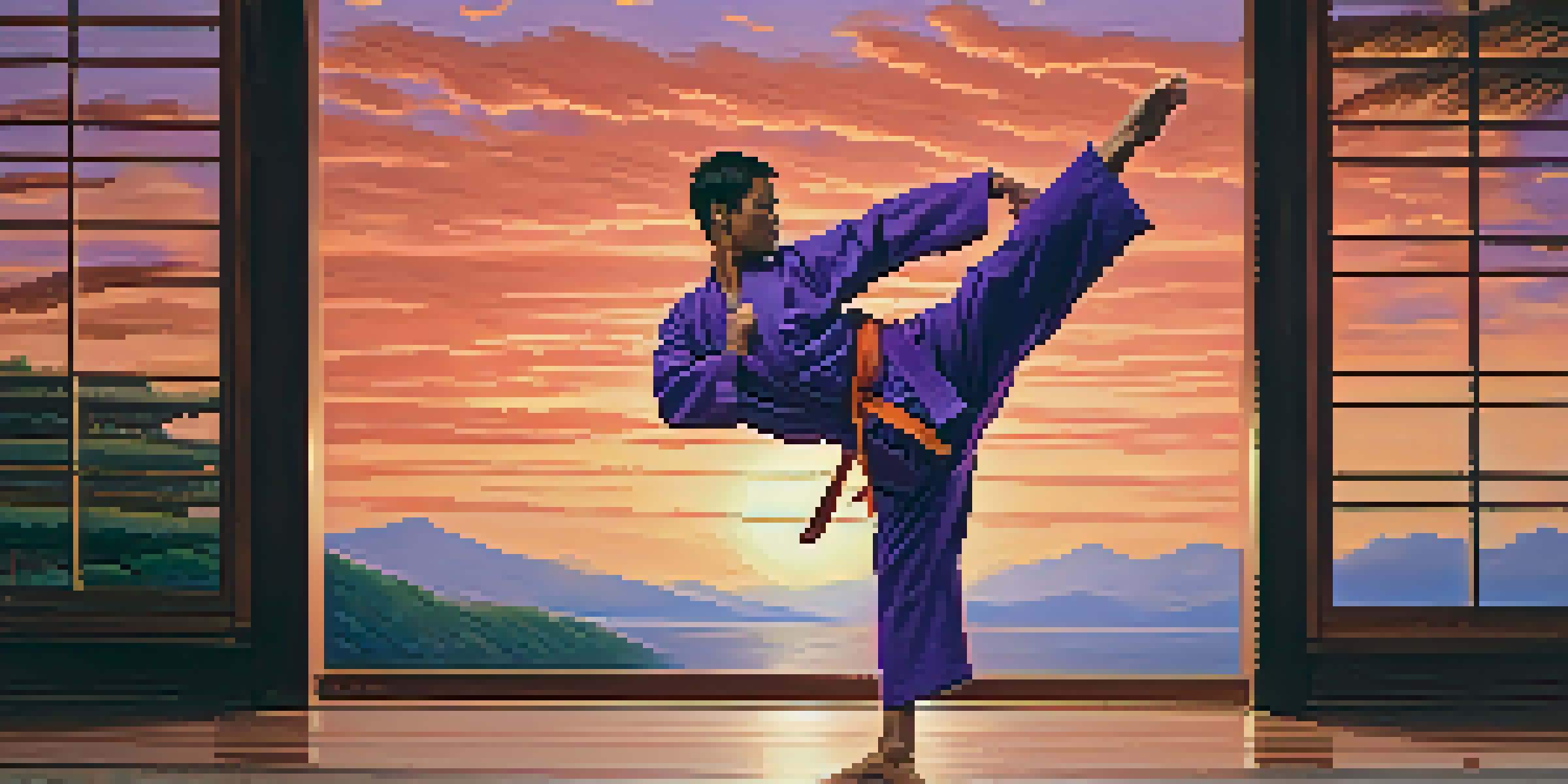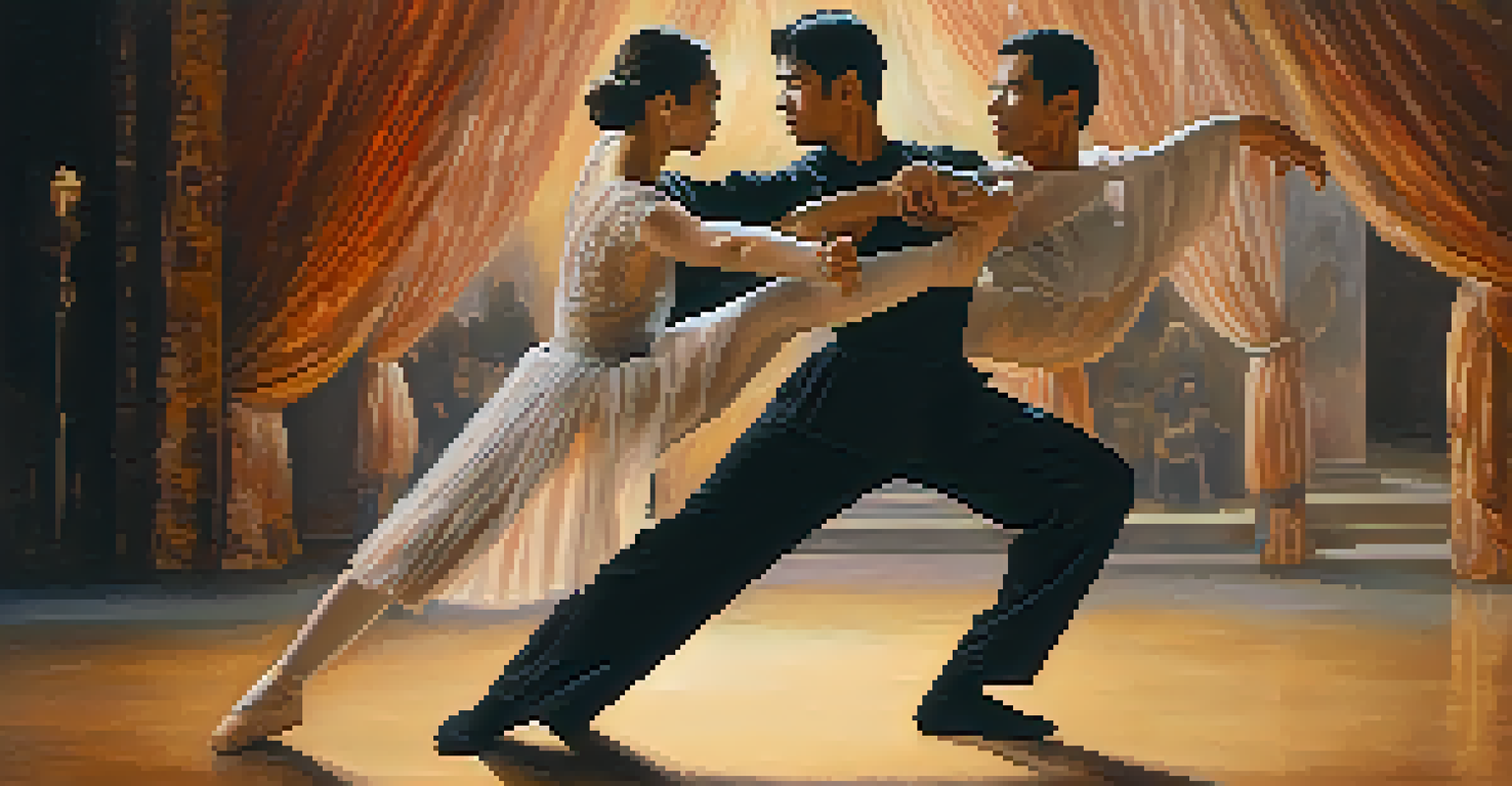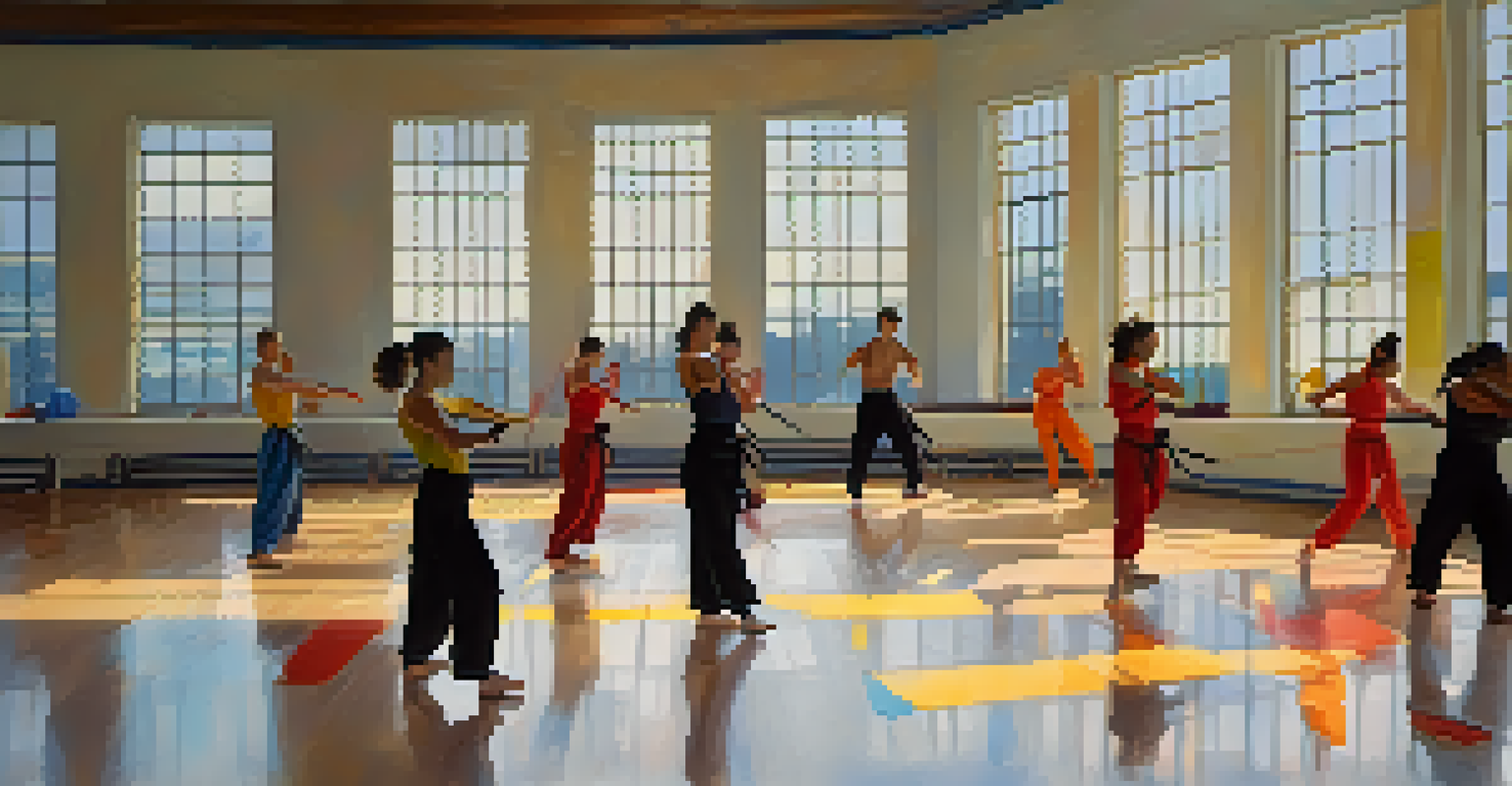The Impact of Martial Arts on Physical Theater Practices

Understanding Martial Arts and Physical Theater
Martial arts encompass various combat practices, emphasizing discipline, technique, and physical fitness. Physical theater, on the other hand, involves the use of bodily movement to convey narratives and emotions, often without spoken words. Both art forms share a common foundation in physical expression, allowing practitioners to explore movement in innovative ways.
The body is a sacred garment.
The melding of martial arts with physical theater creates a unique space where strength and artistry coexist. For instance, a martial artist’s precise movements can enhance a theatrical performance, providing a dynamic visual experience for the audience. This fusion not only enriches the performance but also allows performers to express emotions through their physicality.
Ultimately, understanding these two disciplines sets the stage for exploring their intersection. By examining their similarities and differences, we can appreciate how martial arts can elevate physical theater practices, leading to richer storytelling and more engaging performances.
Physical Conditioning and Performance Skills
One of the most significant impacts of martial arts on physical theater is the enhancement of physical conditioning. Practitioners of martial arts develop strength, agility, and flexibility, all of which are crucial for physical theater performers. This conditioning allows actors to execute complex movements and stunts with ease, creating a more engaging performance.

In addition to physical strength, martial arts training instills discipline and focus. These qualities are essential in physical theater, where performers must be fully present and responsive to their fellow actors and the audience. The ability to maintain concentration while executing challenging movements can elevate a performance to new heights.
Martial Arts Enhance Physical Theater
The physical conditioning and discipline gained from martial arts significantly improve the performance skills of physical theater actors.
Moreover, the techniques learned in martial arts, such as body awareness and spatial orientation, translate seamlessly into theatrical contexts. Performers who understand their physical capabilities can better choreograph their movements, leading to more fluid and expressive performances on stage.
Choreography: Merging Techniques for Storytelling
Choreography in physical theater often requires innovative movement that tells a story. Martial arts provide a rich vocabulary of movements that can be adapted to convey various emotions and narratives. For example, a swift martial arts kick can symbolize conflict, while a flowing tai chi movement might represent harmony.
Movement never lies. It is a barometer telling the state of the soul's weather.
By incorporating martial arts into choreography, physical theater creators can explore new dimensions of storytelling. This integration allows for the development of unique sequences that captivate and engage the audience, creating a visceral experience. The rhythm and precision of martial arts movements can add a layer of intensity to the performance.
As choreographers experiment with these techniques, they can break traditional boundaries, creating a fusion that is both visually stunning and narratively compelling. This innovative approach encourages performers to push their creative limits and explore the full potential of their craft.
Expressive Movement: Emotions in Motion
In physical theater, conveying emotion through movement is essential. Martial arts training emphasizes the connection between mind and body, allowing performers to channel their emotions through their physicality. This connection can lead to more authentic and powerful performances.
For instance, a martial artist might express anger through explosive movements, while joy could be depicted through fluid, graceful motions. By understanding how to manipulate their bodies to reflect their emotional state, performers can create a deeper connection with their audience. This emotional resonance is critical in engaging viewers and making the performance memorable.
Choreography Merges Art and Combat
Incorporating martial arts into choreography allows performers to create innovative movements that enhance storytelling.
Furthermore, the discipline involved in martial arts cultivates resilience, enabling performers to channel their personal experiences into their art. This authenticity can enhance the emotional depth of a physical theater piece, creating a rich tapestry of movement and feeling that resonates with the audience.
Collaboration and Teamwork: Building Trust
Martial arts often involve partner work, requiring practitioners to build trust and communication skills. This aspect translates beautifully into physical theater, where collaboration is key to delivering a cohesive performance. Trust among performers fosters a supportive environment, allowing for risk-taking and creativity.
Through martial arts training, actors learn how to rely on each other’s strengths, creating a sense of unity on stage. This teamwork can lead to more synchronized movements and a stronger overall performance. For example, a group of performers executing a martial arts-inspired fight scene must work together seamlessly to ensure safety and effectiveness.
Moreover, the shared experiences of training in martial arts can deepen bonds among cast members. These connections offstage can translate into a more authentic portrayal of relationships onstage, enhancing the overall impact of the performance.
Cultural Exchange: Enriching Artistic Expression
Martial arts come from a variety of cultural backgrounds, each with its own philosophies and techniques. When integrated into physical theater, these diverse practices can enrich artistic expression and storytelling. This cultural exchange encourages performers to explore new perspectives and incorporate different styles into their work.
For instance, a theater piece inspired by Japanese martial arts might incorporate elements of traditional storytelling, enhancing the narrative through movement. This blending of cultures can create a more inclusive artistic landscape, inviting audiences to experience stories from various cultural viewpoints.
Mindfulness Elevates Performance Quality
The mindfulness and presence cultivated through martial arts training lead to more authentic and engaging performances in physical theater.
Additionally, exploring different martial arts styles allows performers to expand their movement vocabulary. This diversity can lead to more innovative choreography and performances, captivating audiences with fresh and exciting interpretations of familiar themes.
Mindfulness and Presence: The Art of Being Present
Both martial arts and physical theater emphasize the importance of mindfulness and presence. Practicing martial arts encourages individuals to be fully aware of their bodies and surroundings, a skill that is invaluable in theater. This heightened awareness allows performers to connect more deeply with their characters and the audience.
The meditative aspects of martial arts training also promote a sense of calm and focus, which can help actors manage performance anxiety. By incorporating breathing techniques and mindfulness practices from martial arts, performers can cultivate a state of relaxation that enhances their stage presence.

Ultimately, the ability to be present in the moment leads to more authentic performances. When actors are fully engaged in their roles, they can create a more immersive experience for the audience, drawing them into the world of the performance.